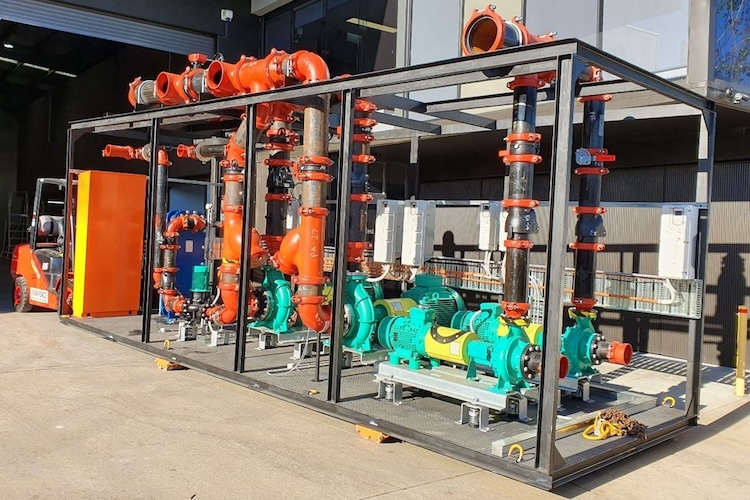Using collaborative delivery for water projects addresses the growing demand in the United States for sustainable and efficient water infrastructure. Incorporating prefabrication and modularization into the build strategy can help mitigate many risks involved in traditional sequential civil-structural-mechanical construction sequencing. This blog post explores the advantages and applications of modularity and prefabrication in piping systems on collaborative delivery water projects, highlighting their potential to enhance construction efficiency, mitigate schedule risks, and reduce the dependence on on-site labor.There are many levels of prefabrication and/or modularization. For this blog, we’ll focus on two types:
1. Preassembly: connecting systems of parts in a shop environment; these multiple subassemblies are then connected in the field
2. Modularization: assembling complete integrated component systems, including piping, electrical, and controls
Prefabrication is not widely used on municipal water and wastewater treatment projects compared to private sector projects, but its benefits are well suited and complementary to collaborative delivery projects.
Collaborative delivery methods provide an optimal environment for prefabrication because of the early involvement of the construction team and supply chain. These benefits aren’t available under design-bid-build delivery because construction begins immediately after bid, which doesn’t allow time for the proper planning associated with prefabrication.
Schedule Savings
A principal benefit of prefabrication is reducing construction time by standardizing components and processes. Modular components, such as treatment units or pipe sections, are manufactured off-site in controlled environments, allowing for mechanical systems construction in parallel to site construction activities. This approach reduces on-site labor requirements and the potential for delays due to adverse weather conditions, resulting in faster project delivery.
Full modularization is already utilized and accepted in engineered equipment and treatment systems. Completed modules are released for fabrication early in the design process and delivered on-site. Expanding the practice to pumping systems, for example, reaps the same benefit of saving time during the build.
Utilizing prefabrication allows for piping systems to be constructed and stored while site construction progresses, allowing for a faster install when work areas are released to piping installers.
Cost Savings
Modularity and prefabrication techniques offer substantial cost savings in collaborative delivery projects. Off-site prefabrication allows for bulk material purchasing, reduced waste generation, and improved quality control, resulting in significant cost reductions.
Furthermore, prefabrication minimizes on-site labor requirements, reducing the need for specialized and skilled workers. Utilizing a centralized prefabrication facility allows for multiple projects to be constructed at once, leveraging the productivity of the facility without dependence on weather or other site disruptions. With the current strain on craft workforce availability, individuals that may not be available for project travel can still be utilized. Streamlining construction activities and eliminating rework contributes to further cost savings.
Quality
The quality of a prefabricated system arises from the fabricator optimizing the design performance requirements into its build. The prefabrication is coordinated with the construction teams to account for installation requirements into the prefabricated elements. This, combined with working in environmentally controlled conditions in an enclosed shop environment, improves the quality of the final product. Shop modularization allows for testing and certification of complete systems, reducing subcomponent testing requirements on-site.
Safety
Using prefabrication systems, many of the safety risks involved in construction site assembly are reduced or eliminated. These include work at heights, hot work associated with welding, confined-space entry, material handling, and slips and falls. Full modularization can remove up to 70% of the associated hours from a jobsite.
Sustainability
Prefabrication also promotes sustainability by minimizing construction waste and reducing the environmental impact associated with on-site activities. Factory-controlled production processes allow for better waste management and recycling practices, contributing to a more sustainable construction approach. Many project proposals now require proponents to provide adequate measures to mitigate disruption to surrounding communities. Reducing site labor, traffic to and from the site, and diverting deliveries to a fabrication facility are strong actions toward this goal.
Utilizing prefabrication techniques in collaborative delivery promotes the following benefits:
- Improved construction productivity
- Reduced construction costs
- Improved quality of build
- Improved risk management
- Meeting sustainability goals
The nature of collaborative delivery methods in water projects promotes early engagement of construction teams and the supply chain. Adding prefabrication considerations is another tool in the risk reduction toolkit.

